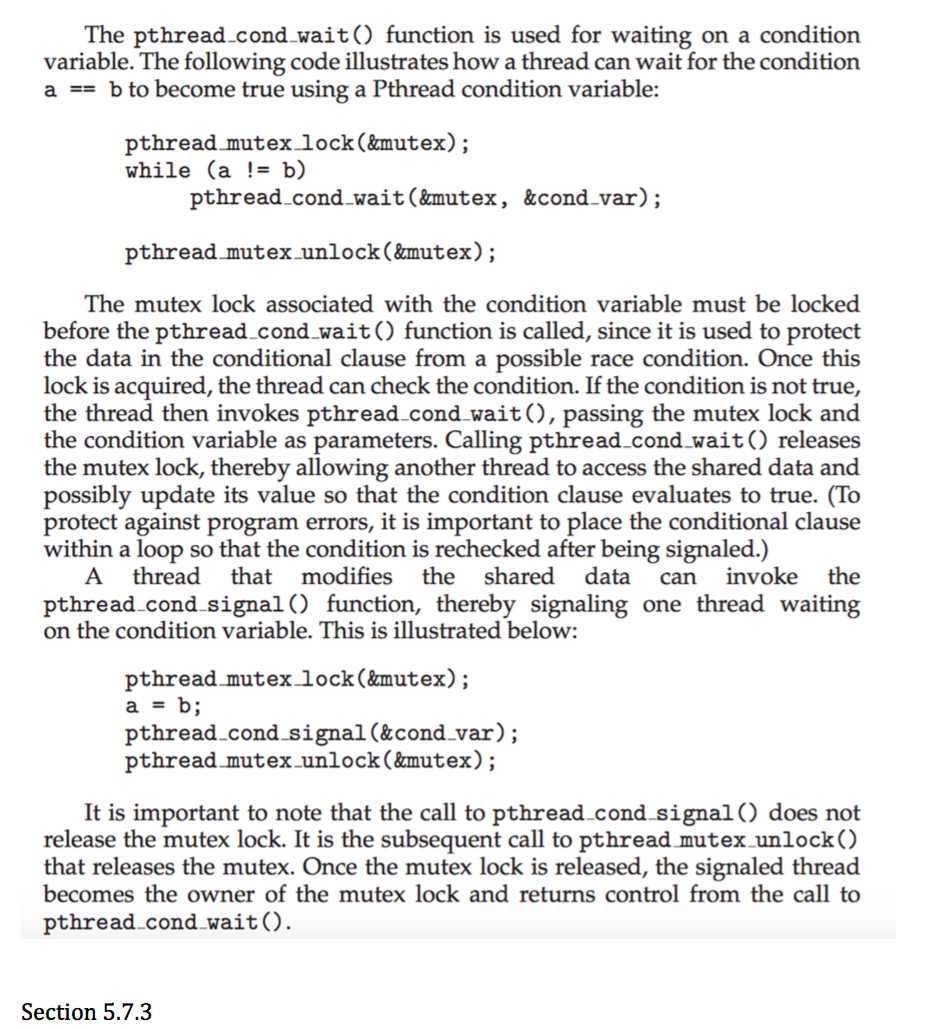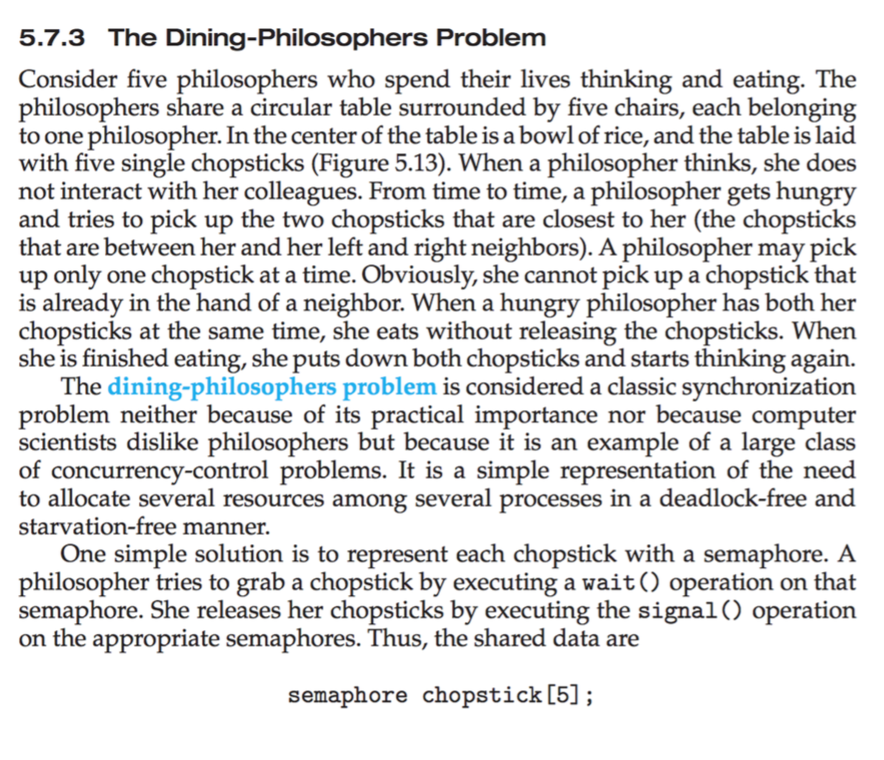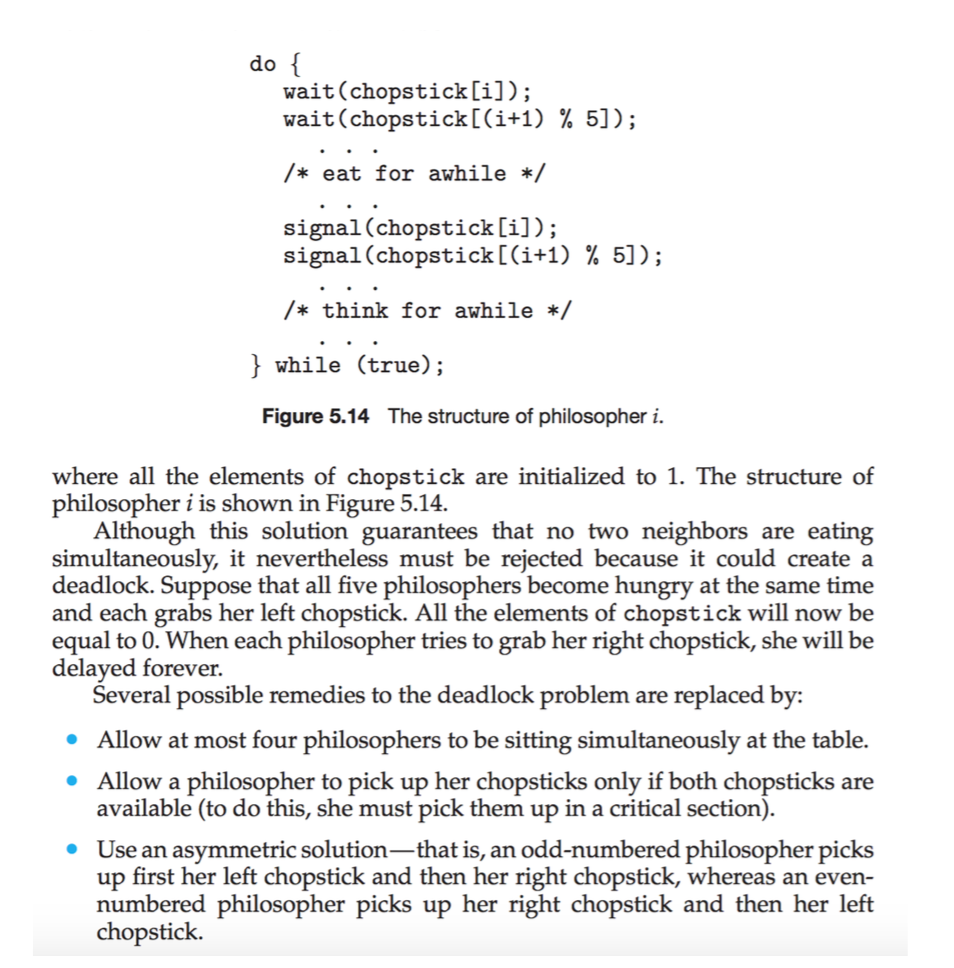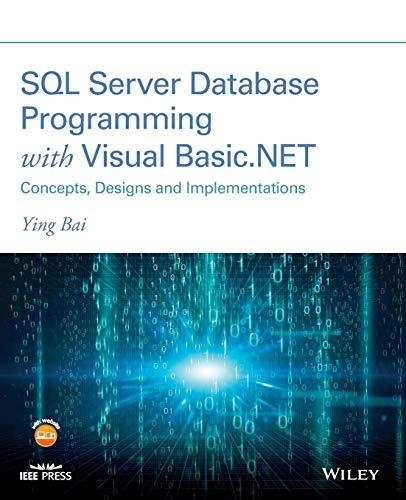Question
In Section 5.7.3, we provide an outline of a solution to the dining-philosophers problem using monitors. This problem will require implementing a solution using Pthreads
In Section 5.7.3, we provide an outline of a solution to the dining-philosophers problem using monitors. This problem will require implementing a solution using Pthreads mutex locks and condition variables. The Philosophers Begin by creating five philosophers, each identified by a number 0 . . 4. Each philosopher will run as a separate thread. Thread creation using Pthreads is covered in Section 4.4.1. Philosophers alternate between thinking and eating. To simulate both activities, have the thread sleep for a random period between one and three seconds. When a philosopher wishes to eat, she invokes the function
pickup forks(int philosopher number) where philosopher number identifies the number of the philosopher wishing
to eat. When a philosopher finishes eating, she invokes
return forks(int philosopher number)
Pthreads Condition Variables
Condition variables in Pthreads behave similarly to those described in Section 5.8. However, in that section, condition variables are used within the context of a monitor, which provides a locking mechanism to ensure data integrity. Since Pthreads is typically used in C programsand since C does not have a monitor we accomplish locking by associating a condition variable with a mutex lock. Pthreads mutex locks are covered in Section 5.9.4. We cover Pthreads condition variables here.
Condition variables in Pthreads use the pthread cond t data type and are initialized using the pthread cond init() function. The following code creates and initializes a condition variable as well as its associated mutex lock:
pthread mutex t mutex; pthread cond t cond var;
pthread mutex init(&mutex,NULL); pthread cond init(&cond var,NULL);
The pthread cond wait() function is used for waiting on a condition variable. The following code illustrates how a thread can wait for the condition a == b to become true using a Pthread condition variable:
pthread mutex lock(&mutex); while (a != b)
pthread cond wait(&mutex, &cond var); pthread mutex unlock(&mutex);
The mutex lock associated with the condition variable must be locked before the pthread cond wait() function is called, since it is used to protect the data in the conditional clause from a possible race condition. Once this lock is acquired, the thread can check the condition. If the condition is not true, the thread then invokes pthread cond wait(), passing the mutex lock and the condition variable as parameters. Calling pthread cond wait() releases the mutex lock, thereby allowing another thread to access the shared data and possibly update its value so that the condition clause evaluates to true. (To protect against program errors, it is important to place the conditional clause within a loop so that the condition is rechecked after being signaled.)
A thread that modifies the shared data can invoke the pthread cond signal() function, thereby signaling one thread waiting on the condition variable. This is illustrated below:
pthread mutex lock(&mutex); a = b; pthread cond signal(&cond var); pthread mutex unlock(&mutex);
It is important to note that the call to pthread cond signal() does not release the mutex lock. It is the subsequent call to pthread mutex unlock() that releases the mutex. Once the mutex lock is released, the signaled thread becomes the owner of the mutex lock and returns control from the call to pthread cond wait().




Step by Step Solution
There are 3 Steps involved in it
Step: 1

Get Instant Access to Expert-Tailored Solutions
See step-by-step solutions with expert insights and AI powered tools for academic success
Step: 2

Step: 3

Ace Your Homework with AI
Get the answers you need in no time with our AI-driven, step-by-step assistance
Get Started


